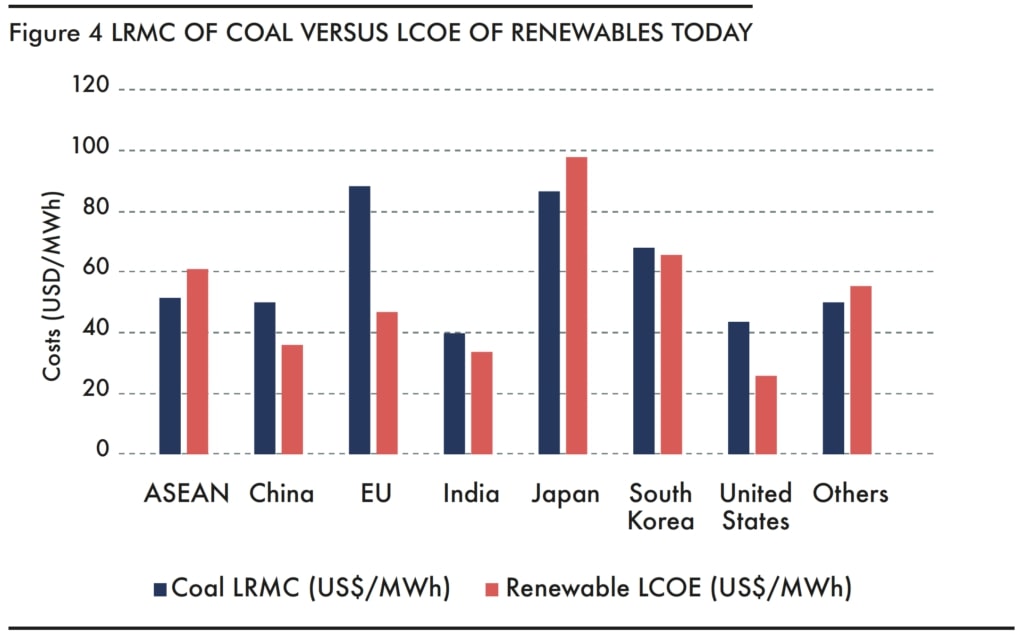A new report by Carbon Tracker has issued its concerns that Asia remains heavily committed to coal, with five countries- China, India, Indonesia, Japan and Vietnam- planning to build more than 600 coal-fired power plants, accounting for 80% of planned coal plants globally. This is in stark contrast to Britain’s announcement that it will aim to phase out coal power by October 2024.
—
What is Happening?
- According to the report, across much of Asia, coal power remains cost competitive, compared to the US and Europe, where coal power is, by and large, significantly more expensive than renewable energy. However, by 2026, it will be more expensive to run almost all coal plants globally than to build new renewable energy projects.
- In 2020, China produced more than half the world’s coal power, reflecting both the growth of coal in Asia and its decline in the US and Europe. In contrast, Britain, home of the world’s first coal-fired power plant, has taken significant steps towards phasing out coal- today, it accounts for only 2% of its electricity mix, down from 25% five years ago.
Britain’s minister of state for business, energy and clean growth Anne-Marie Trevelyan told Reuters, “You can’t do this overnight, and security of supply has to remain … but we have done it and we’ve demonstrated that it’s possible and that clean growth technologies have moved on a lot, and many can invest in them. We want to help all those who want to make that transition to renewable and clean growth an absolute priority.”
Cost Competitiveness of Renewable Energy
- The report says that 27% of the global coal fleet is unprofitable today and that the cost competitiveness of renewable energy versus coal is growing. Today, new renewables beat 77% of operating coal, and this will rise to 98% by 2026 and 99% by 2020 based on current pollution regulations and climate policies when comparing the levelised cost of energy (LCOE) of new renewables to the long-run marginal cost (LRMC) of existing coal units as shown below.
- As mentioned, the report highlights that five countries across Asia (China, India, Vietnam, Indonesia and Japan) are responsible for 80% of the world’s planned new coal plants and 75% of existing coal capacity. In these five countries, 92% of planned coal units will be uneconomic, even under business as usual, and up to USD$150 billion could be wasted.
Catharina Hillenbrand Von Der Neyen, head of power and utilities at Carbon Tracker, told Reuters, “Investors should steer clear of new coal projects, many of which are likely to generate negative returns from the outset.”
You might also like: Leaked IPCC Draft Report Warns of Accelerating Climate Tipping Points

A graph showing the long-run marginal cost (LRMC) of coal versus the levelised cost of energy (LCOE) of new renewables today (Source: Carbon Tracker).
- The report lays out recommendations for investors and policymakers, including
- Cancel all new projects or face $150 billion in value destruction for investors and taxpayers.
- Governments should use post-COVID-19 stimulus as an opportunity to lay the foundations for a sustainable energy system.
- Enabling market design with a level playing field allows continued growth of renewables at least cost.
- In many cases, especially in Asia, governments should resist the urge to switch from coal to liquefied natural gas (LNG).

















